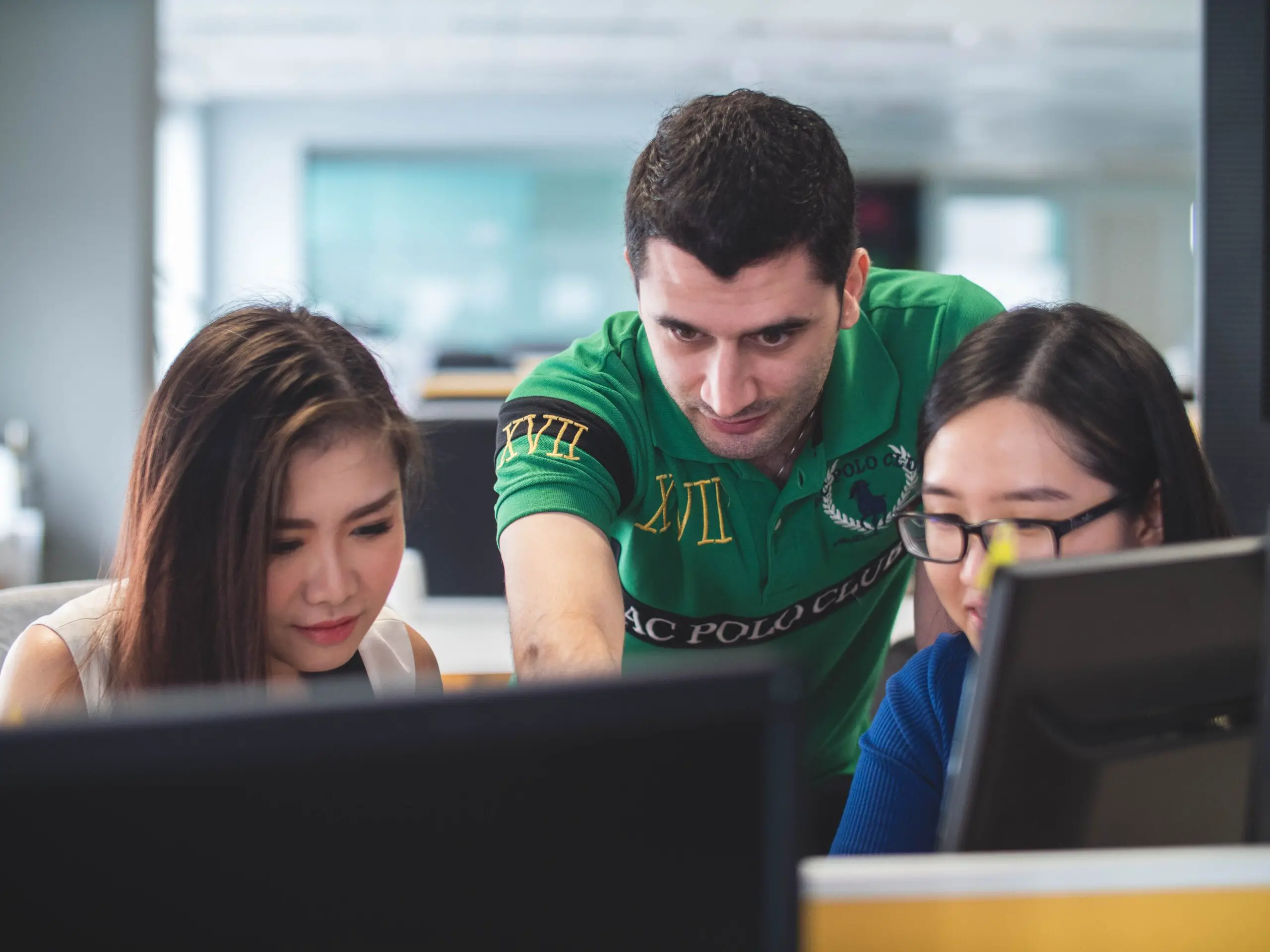Low-income sports funding refers to the financial resources allocated to facilitate sports programs and activities specifically in economically disadvantaged or underprivileged communities.
These funds aim to mitigate the disparities and barriers to sports participation encountered by individuals in low-income areas due to lack of access to facilities, equipment, coaching, and other essential elements needed to partake in sports activities.
Sports funding is a pivotal element that plays a vital role in shaping the landscape of athletic and recreational activities across communities and nations. It’s the fuel that drives the engine of sports development, allowing for the creation of infrastructure, procurement of equipment, and provision of training necessary to foster athletic talent and encourage widespread participation.
However, a deep and often overlooked disparity exists within the realm of sports funding. This disparity particularly affects low-income communities, where inadequate funding stifles the growth of sports, creating a multitude of barriers that prevent individuals from reaping the extensive benefits that sports participation offers.
The issues stemming from inadequate funding in low-income communities are multifaceted. The unavailability of financial resources restricts access to essential sports equipment and quality coaching, making it exceedingly difficult for aspiring athletes to hone their skills and compete effectively. These financial constraints subsequently limit the exposure to diverse sports, confining the scope and the variety of sports activities available to these communities.
Moreover, the scarcity of well-maintained sports facilities in economically disadvantaged areas further exacerbates the situation. The absence of safe and accessible sports venues serves as a significant deterrent, hindering the involvement of community members in athletic pursuits and creating an environment where the development of sports is not prioritized.
The disparities in sports access and funding are not mere obstacles in the pursuit of athletic excellence; they also manifest as lost opportunities for holistic development. Sports are not just about competition and physical activity; they are a potent tool for individual and communal development, instilling values such as discipline, teamwork, and resilience. They serve as a platform for social interaction, fostering a sense of community and mutual respect among participants. By denying equitable access to sports, we inadvertently deprive low-income communities of the transformative power of sports, perpetuating a cycle of inequality and missed potential.
Addressing these disparities is not just about leveling the playing field; it’s about acknowledging and rectifying the inherent injustices that pervade our society. The lack of equitable sports funding in low-income communities is a reflection of the broader socio-economic inequalities that plague our communities. This inequality is not merely a hindrance to the growth of sports; it is an impediment to the realization of a just and inclusive society.
By confronting the inadequacies in sports funding and working towards the establishment of a more equitable and inclusive sports ecosystem, we are not only fostering athletic talent but also facilitating social change. The provision of adequate funding and resources to low-income communities can act as a catalyst, sparking a chain reaction that leads to improved community cohesion, enhanced individual well-being, and elevated societal progress.
It is crucial to delve deeper into understanding the unique challenges faced by low-income communities in accessing sports and to explore innovative, sustainable solutions to bridge the funding gap. The exploration and implementation of diverse funding mechanisms, community partnerships, and inclusive policies can play a significant role in dismantling the barriers to sports participation and in cultivating an environment where sports can thrive as a universal, accessible, and inclusive endeavor.
1. Challenges Faced by Low-Income Communities in Sports:
Sports are often hailed as a universal equalizer, a platform where individuals, regardless of their background, can showcase their talents and achieve greatness. However, the reality is starkly different for low-income communities, where a plethora of challenges significantly hinder sports participation. The roadblocks mainly revolve around access to resources and prevailing financial constraints, creating a formidable barrier for budding athletes.
a) Access to Resources:
In low-income communities, the lack of access to essential sports resources is a fundamental issue. This scarcity primarily involves three core elements: equipment, facilities, and coaching.
The absence of appropriate equipment acts as a preliminary barrier, preventing the initiation into various sports. For numerous sports disciplines, specialized gear is crucial. Whether it is the right kind of ball, racket, protective gear, or footwear, having access to the correct equipment is integral. However, for economically disadvantaged families, the acquisition of such items is often an unattainable luxury, leading to either non-participation or the use of substandard alternatives, which can adversely impact performance and safety.
The inadequacy of sports facilities in low-income areas is another critical impediment. The availability of safe, well-maintained, and accessible sports venues is scant, reducing opportunities for regular practice and competition. This dearth of facilities not only affects the frequency of participation but also limits exposure to a variety of sports, narrowing the spectrum of available athletic pursuits.
Coupled with equipment and facility shortages, the unavailability of quality coaching is a significant detriment. Qualified and experienced coaches are pivotal in nurturing talent, imparting skills, and providing the necessary guidance for athletes to reach their potential. Unfortunately, the shortage of such mentors in underserved areas leaves aspiring athletes without the support and direction needed to excel.
b) Financial Constraints:
Equally, if not more, debilitating is the pervasive financial strain experienced by low-income families. The cost of participation in sports programs often involves enrollment fees, travel expenses, and maintenance costs, which can quickly accumulate, becoming prohibitive for families struggling to meet their basic needs.
The financial constraints extend to the unseen costs, like time and opportunity costs. When young athletes from low-income families commit to sports, they often forgo potential earning opportunities, a sacrifice that their families might not afford, given their economic circumstances. This scenario often forces talented individuals to abandon their sporting aspirations, prioritizing immediate financial stability over long-term potential benefits.
Additionally, the escalating costs of advanced training and competition further aggravate the financial strain. To reach elite levels, athletes require intensive training, specialized coaching, and participation in high-level competitions, all of which involve substantial expenditures. These escalating costs can effectively exclude low-income athletes from advancing in their chosen sports, reinforcing the cycle of inequality.
The combined impact of resource inaccessibility and financial constraints results in a substantial loss of potential. Numerous talented individuals who could have excelled in various sports disciplines remain undiscovered and undeveloped due to these insurmountable barriers.
c) Holistic Impact:
The ramifications of these challenges are profound, affecting not just the individual but the community at large. The inaccessibility to sports opportunities deprives communities of a vital tool for individual and collective development. Sports can act as a conduit for social cohesion, health improvement, and life skill development, and when communities are bereft of these opportunities, it perpetuates socio-economic disparities and hinders community development.
Furthermore, the inability to participate in sports has repercussions beyond the immediate loss of athletic potential. It diminishes the overall well-being and development of individuals, curbing the acquisition of essential life skills such as teamwork, discipline, leadership, and resilience, which are integral components of personal and professional success.
2. Benefits of Sports Participation:
Engagement in sports is not merely a physical endeavor but a holistic experience that fosters well-rounded development. The benefits accrued are multifaceted, impacting individuals’ physical and mental well-being while facilitating community and individual development, especially crucial for those in low-income communities.
a) Physical and Mental Well-being:
Participating in sports is synonymous with enhancing physical health. It promotes cardiovascular fitness, builds muscular strength, improves bone health, and boosts the immune system. The regular physical activity inherent in sports helps in controlling body weight and reducing the risk of chronic diseases such as diabetes, hypertension, and obesity. For individuals in economically disadvantaged areas, where access to healthcare may be limited, engaging in sports can act as a preventive health measure, mitigating the impact of health disparities.
Beyond the evident physical advantages, the psychological benefits of sports participation are profound. It acts as a stress reliever, alleviating symptoms of depression and anxiety, and enhancing mood through the release of endorphins, the body’s natural mood lifters. The increased self-esteem and confidence stemming from sports participation are invaluable, especially for individuals in low-income communities who often face an array of life challenges.
Sports also contribute to cognitive well-being. The focus, concentration, and strategic thinking developed through sports participation can enhance cognitive functions and academic performance. It fosters resilience and coping skills, enabling individuals to better handle life’s stresses and adversities, which are often magnified in low-income settings.
b) Community and Individual Development:
Beyond the individual, the ripple effect of sports extends to communities, particularly in areas grappling with socio-economic challenges. Sports serve as a unifying force, fostering a sense of community and mutual respect. They provide a platform for social interaction and integration, breaking down barriers, building bridges among diverse groups, and contributing to social cohesion and harmony.
Community sports programs can play a pivotal role in deterring anti-social behaviors and juvenile delinquency. They provide a constructive outlet for energy and aggression, imparting values such as discipline, teamwork, and respect for rules. The structure and stability provided by organized sports can be a beacon for those living amidst instability and uncertainty, commonly experienced in economically disadvantaged areas.
The socio-economic benefits of sports participation are multifaceted. They serve as a medium for individual skill enhancement, facilitating the development of leadership, communication, time management, and problem-solving skills. These skills are transferable, having applications beyond the sports field, and are integral to personal and professional success.
Sports can also act as a catalyst for educational and career advancement. Scholarships and sports-based educational opportunities can open doors for higher education, which might otherwise be unattainable for individuals in low-income communities. The discipline, dedication, and work ethic cultivated through sports participation are valued by employers, enhancing employability and career prospects.
Moreover, sports can spur economic development within communities. The establishment of sports facilities and programs can create employment opportunities, stimulate local businesses, and attract investments, contributing to the overall economic revitalization of underprivileged areas.
3. Innovative Funding Solutions:
Addressing the disparity in sports funding, especially in low-income areas, necessitates the exploration and implementation of innovative funding solutions. By tapping into varied funding streams and leveraging collaborations, communities can marshal the necessary resources to bolster sports programs and create lasting impacts.
a) Community Partnerships and Sponsorships:
One of the most potent mechanisms to drive sports funding in underprivileged areas is through the establishment of robust community partnerships and sponsorships. By collaborating with local businesses, organizations, and individuals, sports programs can gain the essential support and resources needed to thrive.
Community partnerships can take varied forms, including collaborations with schools, non-profits, and local agencies, which can contribute not just financially, but also through volunteering, provision of spaces, and supply of equipment. These partnerships can create a symbiotic relationship, where local entities contribute to the development of sports programs, and in return, gain community goodwill and local brand enhancement.
Sponsorships, on the other hand, often involve collaborations with corporations or high-net-worth individuals willing to invest in local sports programs. Sponsorships can be transformative, providing substantial financial support, exposure, and access to networks. By aligning sports programs with the interests and values of sponsors, a sustainable and mutually beneficial relationship can be established.
Furthermore, local sports events, fundraising campaigns, and crowdfunding can be leveraged to generate funds. These initiatives not only raise financial resources but also create awareness and engagement within the community, fostering a sense of ownership and collective responsibility towards the development of sports programs in the area.
b) Grants and Government Programs:
Equally critical are grants and government programs, which are instrumental in fostering sports development in underserved communities. Several government initiatives and programs are designed to promote sports in such areas, offering financial support, resources, and guidance.
Grants from federal, state, and local government bodies can be a lifeline for sports programs in low-income communities. Accessing these grants typically involves a rigorous application process, necessitating a clear articulation of goals, plans, and impact assessments. Communities need to proactively seek out such opportunities, ensuring compliance with eligibility criteria and application protocols.
Moreover, various non-profit organizations and foundations offer grants aimed at promoting sports in disadvantaged areas. These grants can be tailored to support different aspects of sports programs, including infrastructure development, equipment purchase, and coaching. By aligning the objectives and needs of sports programs with the mission and priorities of grant-providing organizations, communities can access valuable support.
Additionally, government programs aimed at community development and youth engagement often encompass sports promotion components. By actively participating in such programs and advocating for the inclusion of sports development initiatives, communities can channel government resources and support towards sports programs.
Leveraging government grants and programs requires diligence, advocacy, and collaboration. Communities need to be attuned to available opportunities, engage with relevant stakeholders, and present compelling cases for support. By doing so, they can unlock varied funding avenues and drive the sustained growth of sports programs.
4. Case Studies on Successful Low-Income Sports Funding Initiatives
Understanding the practical implementation and success of innovative funding solutions is pivotal to fostering sports in low-income communities. Examining local and global case studies provides insightful narratives and strategies that underscore the transformative power of well-funded sports programs in underserved areas.
a) Local Success Stories:
Various sports programs within the United States have triumphed over the daunting challenge of funding, thereby offering inspiration and a roadmap to others. One such instance is the revitalization of a community sports program in an economically distressed neighborhood. By forging partnerships with local businesses and harnessing the support of individual sponsors, the program managed to secure essential resources, such as equipment and facilities, which facilitated the participation of countless youths in sports activities. The ripple effects were profound, manifesting in enhanced physical and mental well-being, improved academic outcomes, and a reduction in anti-social behaviors within the community. This endeavor underscores the potential of community engagement and private sponsorships in fueling sports programs in low-income areas.
Another illustrative example involves a grassroots sports initiative that capitalized on government grants and nonprofit funding. The meticulous alignment of program goals with grant requirements and extensive community outreach culminated in substantial financial support. This funding enabled the development of sports infrastructure, the conductance of training sessions, and the organization of local sports events, instigating a wave of positive change in the community. It reiterates the significance of aligning objectives, proactive grant-seeking, and community involvement in securing and optimizing funding opportunities.
b) Global Inspirations:
Globally, myriad examples depict the successful deployment of innovative funding solutions in low-income sports initiatives. In a small town in South Africa, a sports program aimed at youths utilized crowdfunding and international sponsorships to overcome financial constraints. The worldwide outreach and compelling narrative attracted donors and sponsors from across the globe, resulting in the provision of sports equipment, coaching, and educational support to the participants. This initiative not only augmented the physical and psychosocial well-being of the youths but also fostered social cohesion and resilience within the community. It illustrates the power of global solidarity, storytelling, and crowdfunding in overcoming funding barriers and promoting sports in impoverished regions.
Another compelling story emerges from a soccer program in Brazil, located in a favela, characterized by poverty and crime. The program leveraged local partnerships, volunteerism, and international collaborations to facilitate sports participation amongst the local children. The amalgamation of resources, skills, and support from varied stakeholders resulted in the establishment of a sustainable sports program, offering a sanctuary and developmental platform to the children. The impacts transcended beyond the sports field, reflecting in improved life skills, educational attainment, and a sense of purpose amongst the participants. This example exemplifies the efficacy of multifaceted collaborations, volunteer contributions, and international alliances in championing sports in underprivileged communities.
Conclusion:
Addressing the myriad challenges and intricacies inherent in low-income sports funding is crucial to fostering equity, empowerment, and holistic development within our societies. This exploration has traversed the landscape of challenges, benefits, innovative solutions, and real-world implementations, each weaving into the broader tapestry of sports funding equality and its profound implications on individual and societal well-being.
The daunting barriers faced by low-income communities, ranging from financial constraints to lack of access to necessary resources, are substantial yet not insurmountable. The disparities in sports access and the resultant repercussions on physical and mental health, as well as on community and individual development, underscore the pressing need to address these issues with urgency and commitment.
The benefits derived from sports participation are multifold and transformative. They extend beyond the realms of physical and mental well-being to encompass socio-economic upliftment, skill enhancement, and community cohesion. These benefits are not mere luxuries but are fundamental rights that should be accessible to all, regardless of their economic background.
The innovative funding solutions and the real-world case studies illustrate the boundless potential and versatility in addressing sports funding challenges. Community partnerships, sponsorships, grants, government programs, and international collaborations are powerful tools that can be synergized to create sustainable and impactful sports programs. The success stories from various corners of the world are illuminating beacons, offering inspiration, insights, and replicable models for creating equitable sports opportunities.
Call to Action:
This discourse serves as a clarion call to individuals, communities, organizations, and governments to actively engage in bridging the sports funding gap. It beckons collective introspection, creativity, advocacy, and action to ensure that the enriching tapestry of sports is accessible to every individual, regardless of their socio-economic standing.
It implores the harnessing of diverse and innovative funding avenues, the fostering of collaborations, and the nurturing of a shared vision and responsibility. It is an invitation to contribute to a movement that transcends the confines of sports fields to shape a world marked by equality, resilience, and shared prosperity.
Unlock Your Grant Success!
Join our email list now for exclusive grant-writing tips and unique grant opportunities delivered straight to your inbox. Click here to Subscribe. Don’t miss out!
Elevate Your Grant Writing Game: Dive Deeper with Expert Resources!
If you’ve ever felt the rush of excitement upon spotting a potential grant opportunity, only to be met with the daunting challenge of crafting the perfect proposal, you’re not alone.
Grant writing is both an art and a science, and I’ve distilled years of expertise into a collection of resources tailored to guide you, whether you’re a nonprofit visionary, a rising freelancer, or a small business owner.
Handpicked Titles Just For You:
1. Advanced Grant Writing for Nonprofits: Dive beyond the basics and navigate the intricate nuances to stand out.
2. Becoming the Grant Guru: Embrace your freelance journey with techniques and strategies that ensure success in the grant universe.
3. Mastering Grant Writing: Your nonprofit’s go-to guide for developing compelling proposals that captivate and convince.
4. The Small Business’s Guide to Winning Grants: Tailored insights to ensure your business’s endeavors are backed by the right funding.
Whether you’re taking your first steps in grant writing or seeking to refine your approach, there’s something in this collection for everyone.
Invest in your future now. These titles are available on Amazon, both in Kindle and paperback formats. Arm yourself with the knowledge to not just compete, but to excel.
Dive into a World of Grants Mastery – Grab Your Copies on Amazon
Fuel your passion, secure that funding, and bring your vision to life!
Unlock Your Grant Success!
Join our email list now for exclusive grant-writing tips and unique grant opportunities delivered straight to your inbox. Click here to Subscribe. Don’t miss out!
Work With Me: Elevate Your Nonprofit’s Grant Writing Game!
Hello passionate changemakers,
Does your nonprofit organization resonate with these challenges?
1. Feeling overwhelmed by the intricate maze of grant proposal writing?
2. Struggling to secure vital funding due to lackluster proposals?
3. Battling with limited in-house expertise to identify suitable grant opportunities?
4. Frustrated by not knowing how to articulate your mission effectively to potential funders?
If you nodded in agreement to any of these, you’re not alone. But here’s the good news: Together, we can change this narrative.
Why Partner With Me?
I bring to the table a unique blend of expertise and experience. As a seasoned Grant Writing Consultant, I’ve dedicated my career to mastering the art and science of grant writing. But beyond the knowledge, I carry a heartfelt passion for amplifying the impact of nonprofits like yours.
What I Offer:
1. Grant Writing Training: Let’s empower your team! Through comprehensive workshops, I’ll train your staff to craft compelling proposals that captivate, convince, and convert.
2. Personalized Grant Proposal Writing: Leverage my expertise to develop meticulously tailored proposals that reflect your organization’s vision, mission, and impact stories.
3. Strategic Grant Research: Don’t waste hours on unsuitable opportunities. With my deep industry insights, I’ll help identify grants that align with your objectives and values.
4. Report Development: Secure future funding by showcasing your successes. I’ll help you design robust, engaging reports that keep funders connected to your cause.
Our Journey Together:
Our collaboration begins with understanding – diving deep into your organization’s ethos, the communities you serve, and the impact you wish to create. It’s a partnership where your dreams become mine, and together, we’ll weave narratives that resonate, inspire, and secure the resources you need.
Your work in the nonprofit sector is invaluable. Every program initiated, every life touched, every community transformed – it all starts with a well-written proposal that opens doors to necessary funding. Let me be that catalyst for you.
A Future of Possibilities:
Picture this: A future where your nonprofit isn’t just surviving, but thriving. A world where your initiatives are backed by ample funding, and your stories of impact echo in the hearts of donors and communities alike.
So, if you’re ready to ascend the ladder of grant writing success and fuel your organization’s mission with robust funding, I’m here, eager and ready.
Let’s co-create this success story.
Reach out today, and let’s set the stage for a brighter, impactful tomorrow.
Email Address: queenisrael88@gmail.com
Unlock Your Grant Success!
Join our email list now for exclusive grant-writing tips and unique grant opportunities delivered straight to your inbox. Click here to Subscribe. Don’t miss out!






